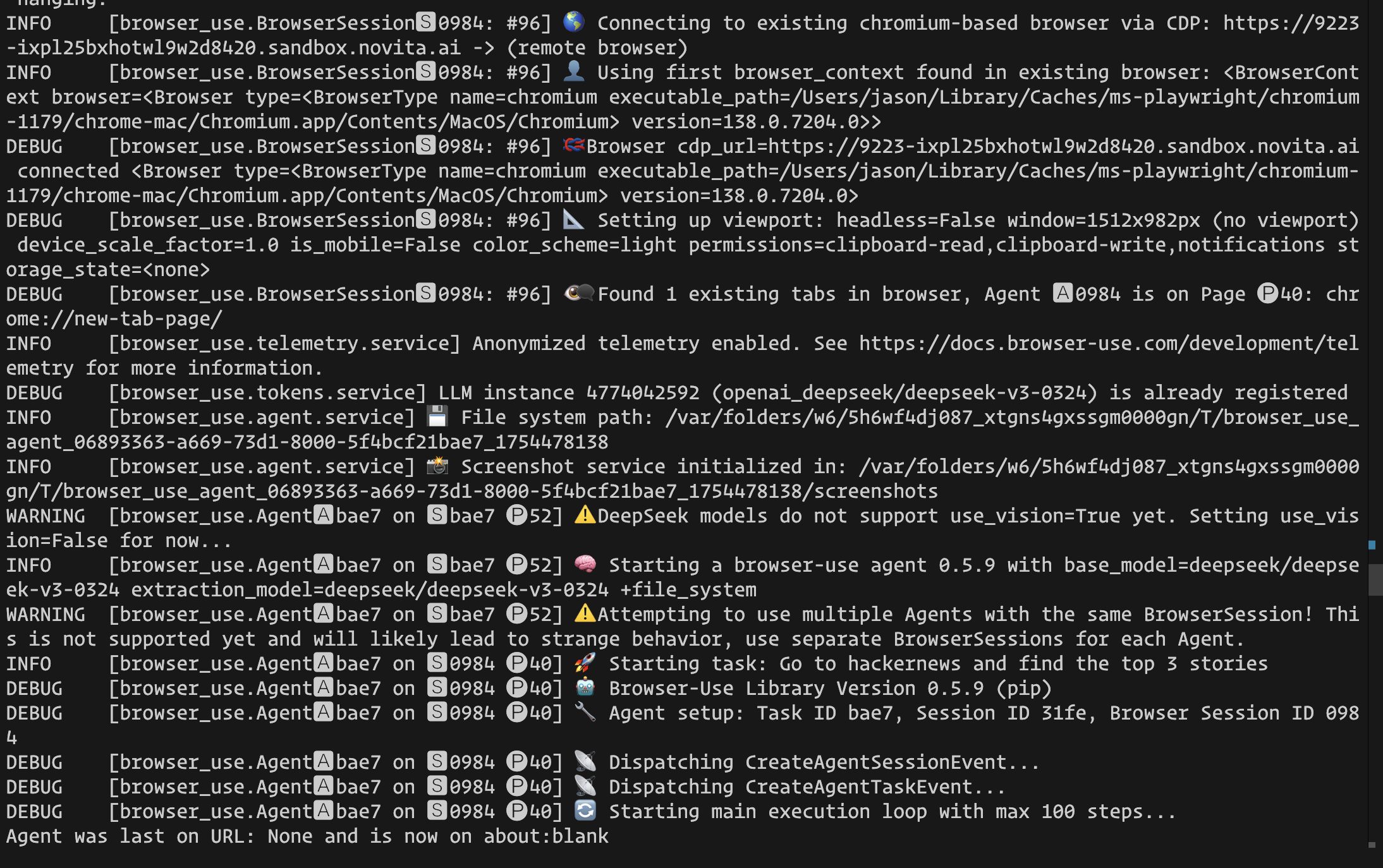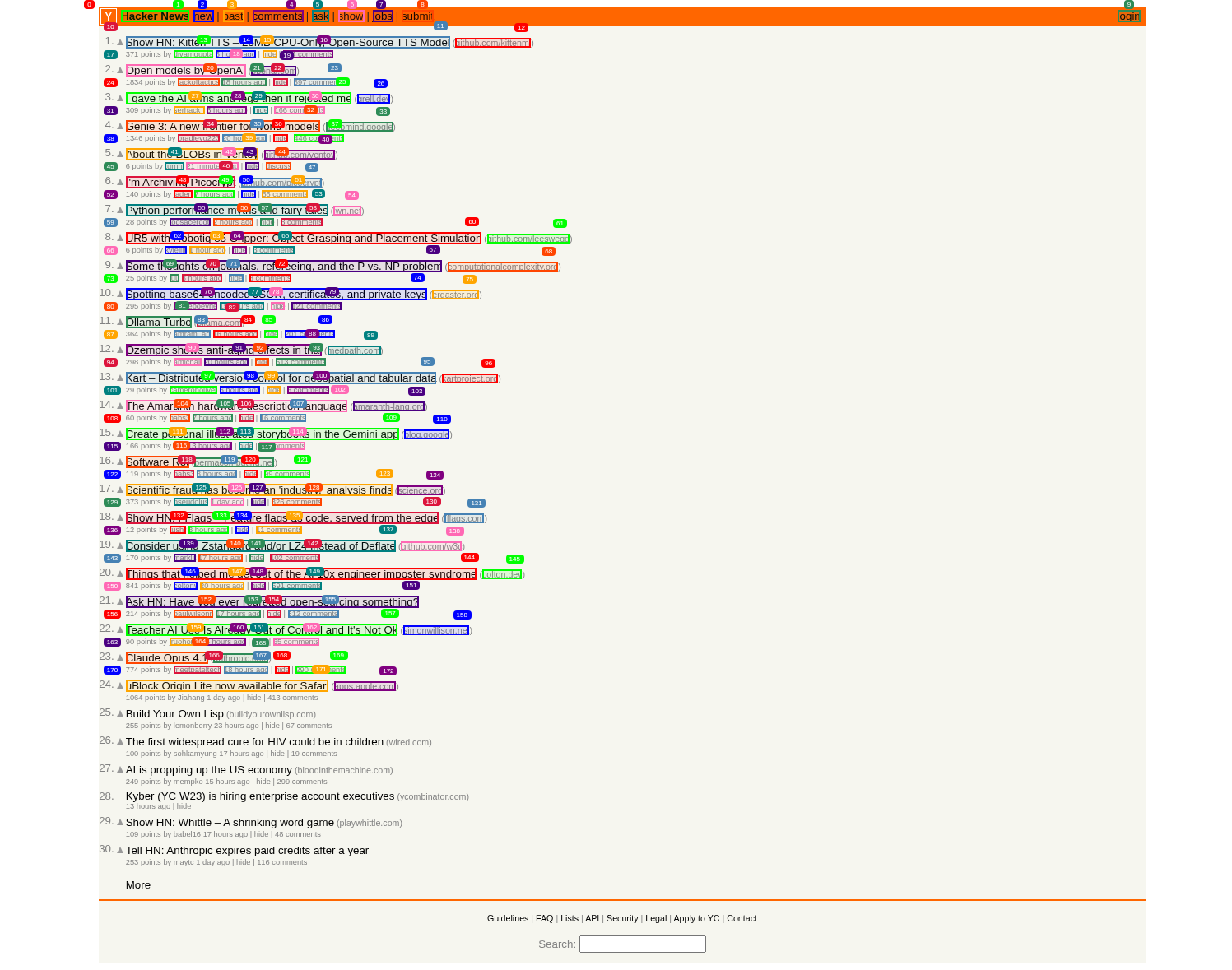browser-chromium sandbox template released by Novita. If you want to create your own template based on this or view more complete example code, please refer to here.
1. Get Novita API Key
2. Configure Environment Variables
Before getting started, you need to configure the necessary environment variables:Bash
3. Install Dependencies
Install the required Python packages:Python
4. Example Code
agent.py
5. Run the Agent
After Installing the dependencies and setting up the environment variables, you can run the example code. You can see the output in the terminal as below if everything goes well. Browser-use is running tasks in the remote browser inside your sandbox.

